culture, japanese food, natto, natto rice, rice, superfood
Let’s Talk About Natto, Japan’s Best Superfood
Linh Le
Posted on October 18, 2022
Share:
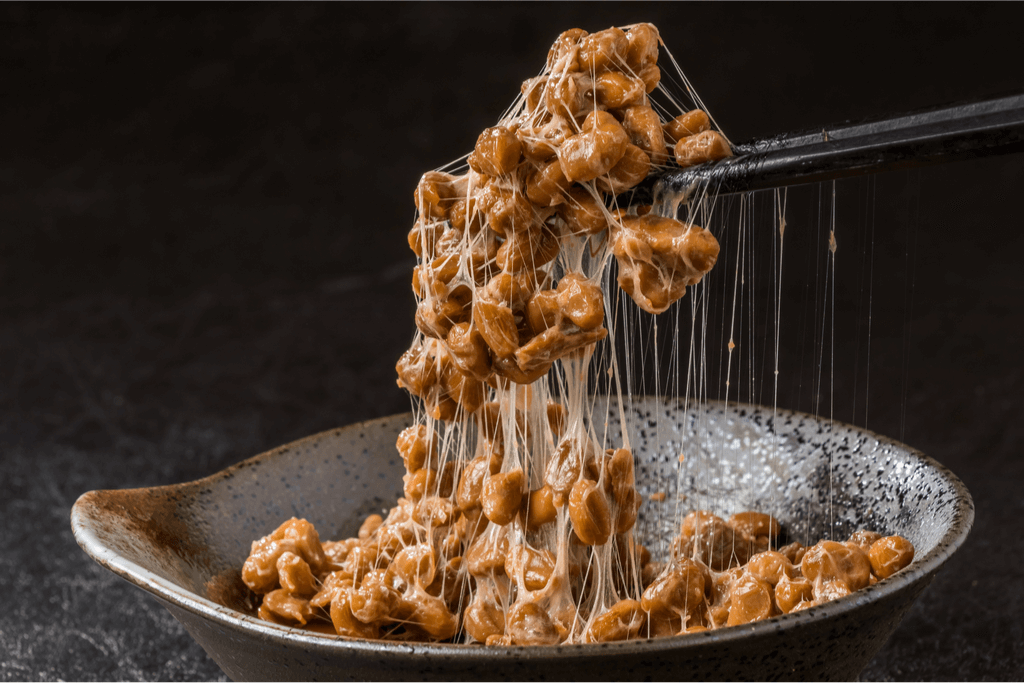
Natto is a very famous and divisive superfood from Japan. While most people agree that it’s an acquired taste, there are so many nutritional benefits! Not to mention it can be quite delicious when paired with the right ingredients. Today, let’s discover why it’s so popular and the many ways you can enjoy it!
Overview
Natto is Japanese fermented soybeans and is characterized by a sticky texture and slightly pungent odor. It has a unique umami (a meat-like sweetness) flavor, and is best topped with soy sauce, mustard, chives or other condiments and served with cooked rice.
Traditionally, natto is made by wrapping boiled soybeans in rice straw, which naturally harbors the Bacillus subtilis bacteria on the surface of the beans. Doing so allows the bacteria to ferment the sugars found in the beans, eventually creating natto.
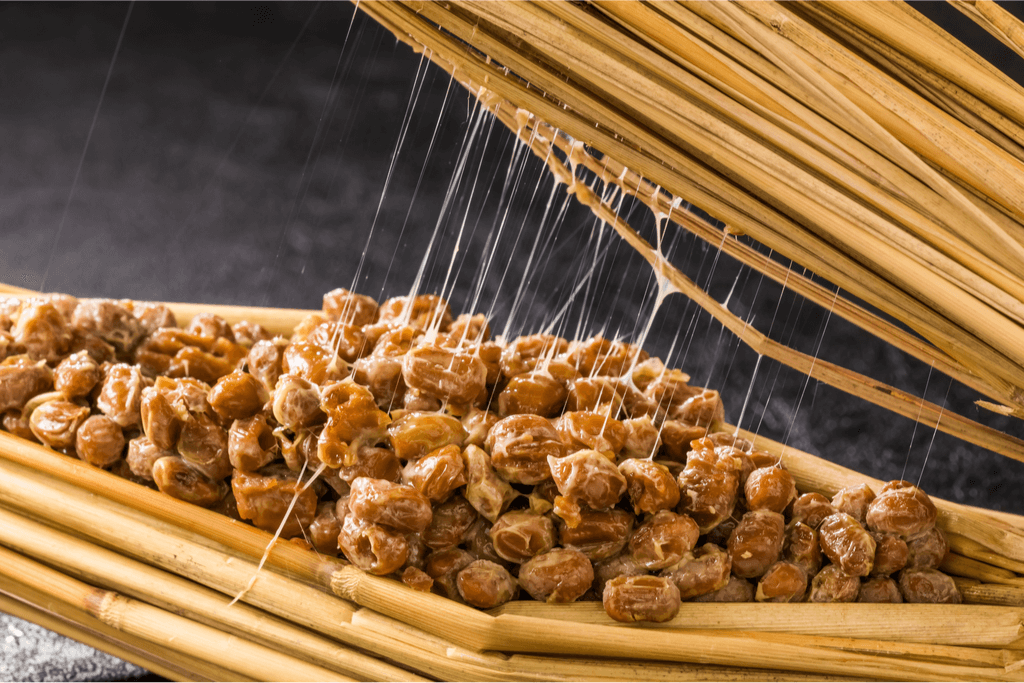
However, in the early 20th century, the bacterium B. subtilis was identified and isolated by scientists, creating a modern method of making natto. Nowadays, rice straw has been replaced by styrofoam containers, in which B. subtilis can be added directly to boiled soybeans to start the fermentation process.
Want to adopt the eating lifestyle of the Japanese? Let Sakuraco introduce you to some of the best Japanese food out there! Sakuraco delivers traditional Japanese snacks, teas and sweets, from local Japanese makers directly to your door, so you enjoy Japanese taste at your convenience!
Health Benefits of Natto
Promotes heart health
Natto helps contribute to a healthier heart because it contains fiber and probiotics, both of which can help lower cholesterol levels. Furthermore, natto fermentation produces nattokinase, an enzyme that helps dissolve blood clots.
Good for digestion, excretion and skin beauty
The microorganisms and enzymes present in natto support our digestive system to work more efficiently. Limit flatulence, indigestion, enhance nutrient absorption into the body. Thereby purifying and eliminating toxins, making our general health and skin fresher and healthier.
Good for bone strength
Natto is a superfood that’s rich in calcium and magnesium needed for bone growth. At the same time, they are also rich in minerals that enhance the absorption of calcium and collagen from the blood into the bones such as Vitamins K1 and K2, making bones both supple and strong. The isoflavones present in natto play a role in reducing the risk of osteoporosis in humans.
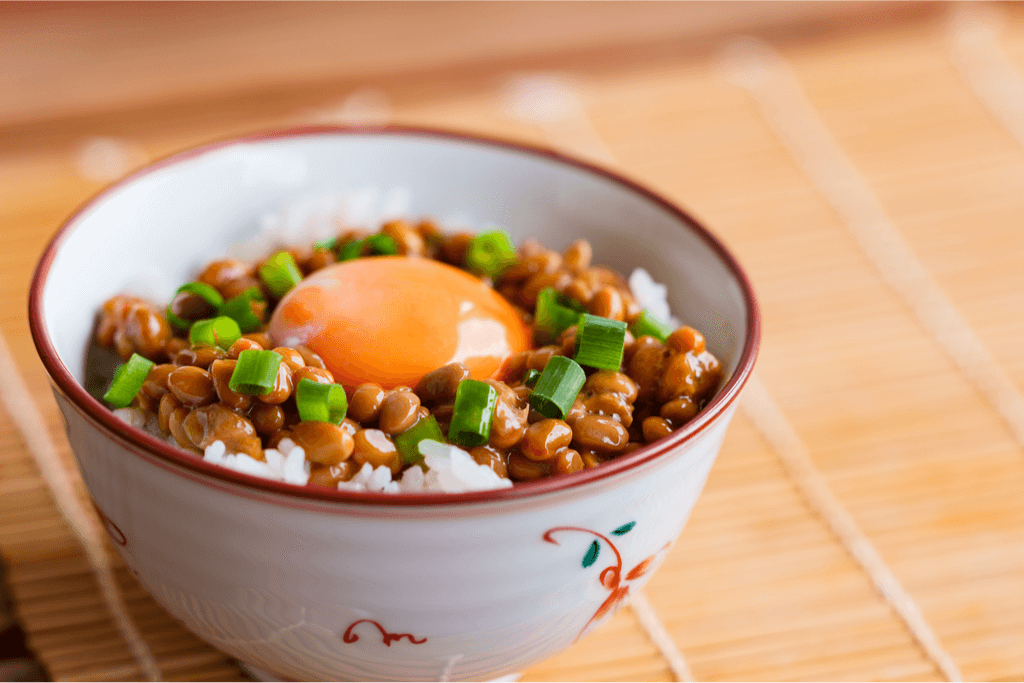
Immune booster
Bacillus subtilis, the bacteria found in natto, may help improve immune function. This beneficial bacteria promotes gut health, inhibits the growth of dangerous disease-causing bacteria like Escherichia coli, and may even promote natural antibody production.
Anti-inflammatory, increases memory
Choline and probiotics abundant in natto work to maintain cell membranes, and reduce chronic inflammation very effectively. Therefore, eating natto at night before bed will help our brain circulation work better, sleep deeper and better, and make the mind and body refreshed after waking up.
Probiotic-rich foods like natto can help reduce stress, improve memory, and reduce anxiety, depression, autism, and obsessive-compulsive disorder (OCD).
Other benefits
In addition, probiotics reduce the risk of infection and help the body recover faster. In addition to its high probiotic content, natto is rich in vitamin C, iron, zinc, selenium, and copper, all of which play important roles in immune function to prevent cholera, typhoid, dysentery.
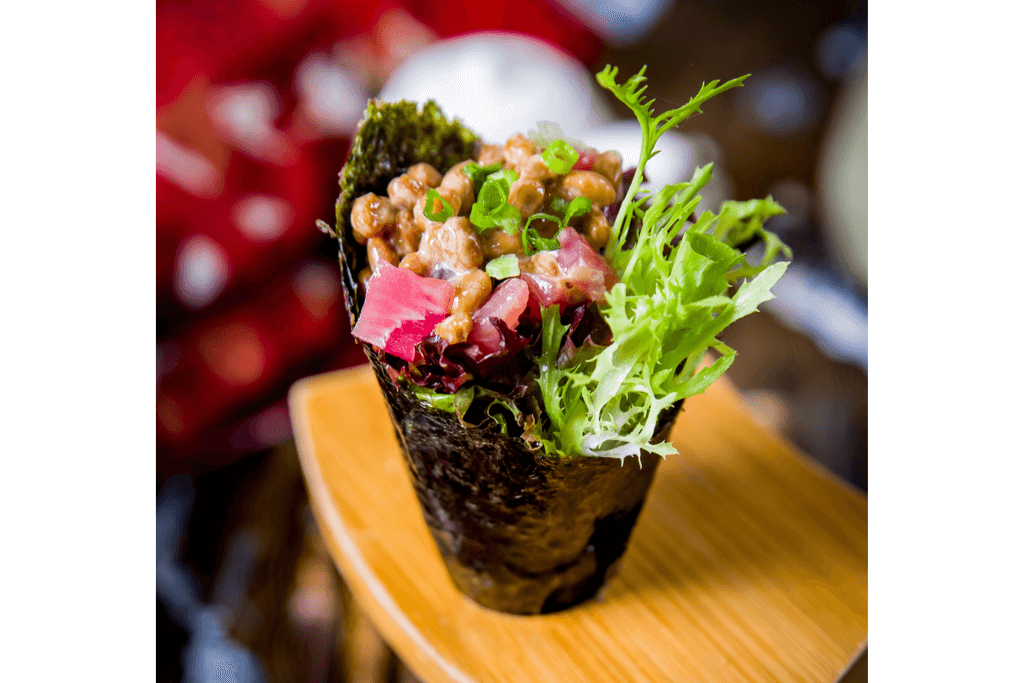
You might not believe it but eating natto can help reduce risk of certain cancers because natto contains soy isoflavones and vitamin K2. Both can reduce the risk of liver, prostate, digestive and breast cancers.
Moreover, if you want to stay fit, natto must be in your daily go-to menu. Natto contains a large amount of probiotics and fiber, both of which can play a role in preventing weight gain and optimizing weight loss.
How to Make Natto Rice
In order to enjoy natto, there are proper steps to take:
- Remove the cover from the specified corner of the package to open the lid.
- Take out the dashi (sauce) and karashi (yellow mustard) that is placed on top.
- Remove the transparent plastic covering the surface of the natto. Grab the plastic from the middle and lift it up slowly so that natto doesn’t stick.
- Stir the natto with the attached seasoning packet viachopsticks. Be careful not to puncture the foam at the bottom. If you find it difficult to stir it in the styrofoam package, transfer it to another container and mix until the texture gets bubbly and elastic.
- Lastly, placing natto over hot rice to make natto gohan – (納豆ご飯: natto rice). This is the most common way of eating it in Japan.
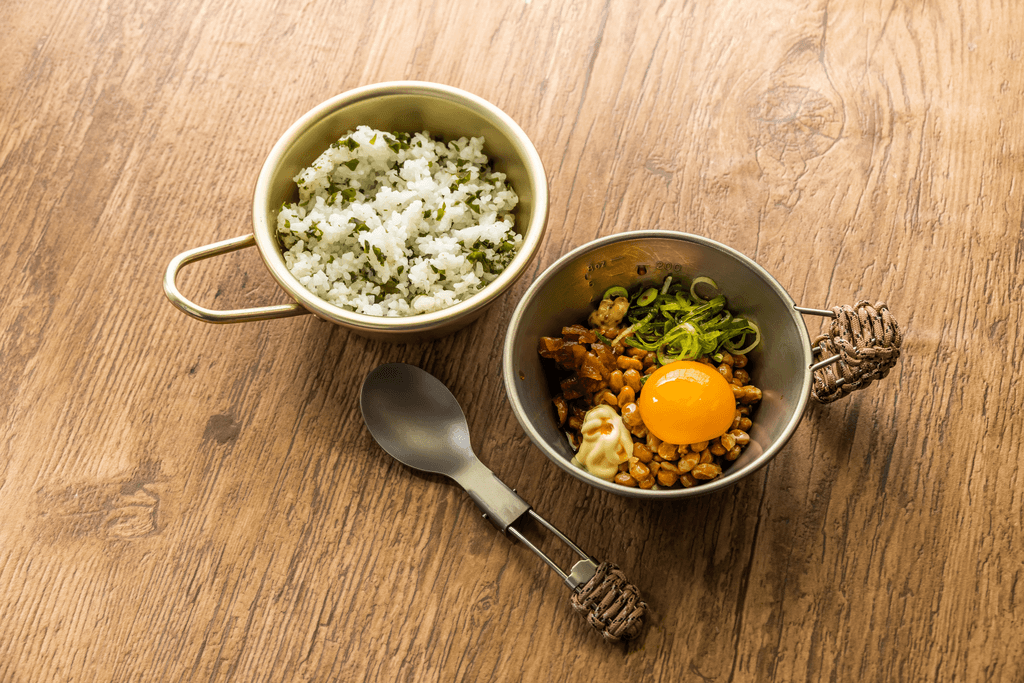
Additional suggestions
The suggestion is to add different ingredients or seasonings to make the dish more delicious, but also to soften natto’s characteristic flavor. Try combining it with ingredients such as kimchi, green onion, and avocado. It’s also a common ingredient in sushi. You can enjoy this dish with a spoon or with chopsticks.
You can also use umeboshi (salted plum), shiso (perilla leaves), dried sardines, bonito flakes, also known as katsuo-bushi (かつお節: shaved fish), and eggs. The reason is mixing natto with salted or strongly seasoned foods will somewhat reduce its characteristic smell and make it much easier to eat.
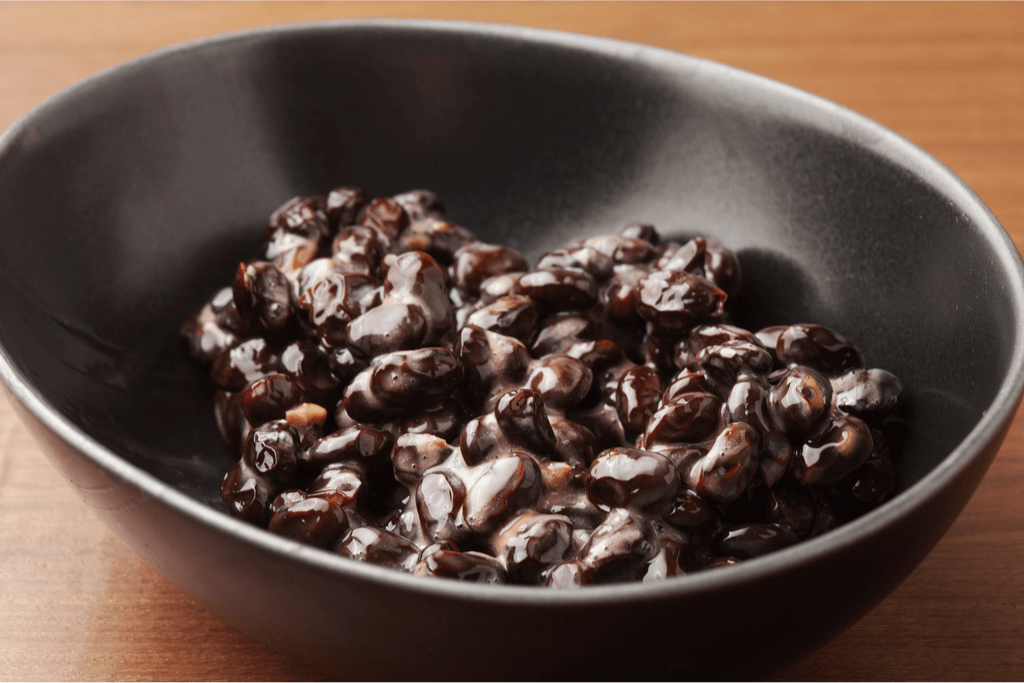
If you find natto to be a little too strong for your taste, you can pair it with other dishes instead. The most common pairings include sandwiches, fried rice, and fried eggs. When adding natto to other dishes, you can remove the stickiness by rinsing the natto with water but the umami taste of natto will decrease.
As you can see, there are many benefits to eating natto, the best Japanese superfood! Have you ever eaten natto? What was your experience like? Let us know in the comments below!

Discover authentic flavors with Sakuraco
Get Sakuraco 

Discover authentic flavors with Sakuraco
Get Sakuraco 
Related Articles

Hatsumode: Why Is It Japan’s Most Important Tradition?
Hatsumode is the first visit to a shrine or temple in the New Year in Japan, and it is one of the country’s most important traditions. Every year, millions of people participate, demonstrating the profound connection between this custom and daily life.

Japanese Fish Bait: The Beautiful Art of Kebari
Kebari are traditional hand-tied flies used for freshwater fishing in Japan, especially in mountain streams where small insects form the main diet of native fish. Instead of bright plastic lures, kebari use feathers, thread, and natural materials to create subtle movements in the water.

Japan Holidays Guide: Relax, Explore, and Delight in Festive Fun
As the year draws to a close, everywhere buzzes with preparations for the holidays, and Japan is no exception. Despite the cold winter weather, you can feel warmth in the scenery, decorations, and festive activities across the country. Let’s explore the unique experiences of holidays in Japan that many people dream of enjoying at least once in their lifetime!

Tokyo Gardens: Five Beautiful Traditional Japanese Gardens to Visit
Tokyo gardens offer a relaxing escape for visitors looking to get a breath of fresh air. However, Tokyo has more than just the typical gardens we see in the West. Let’s explore five traditional Japanese gardens and what makes them unique!



